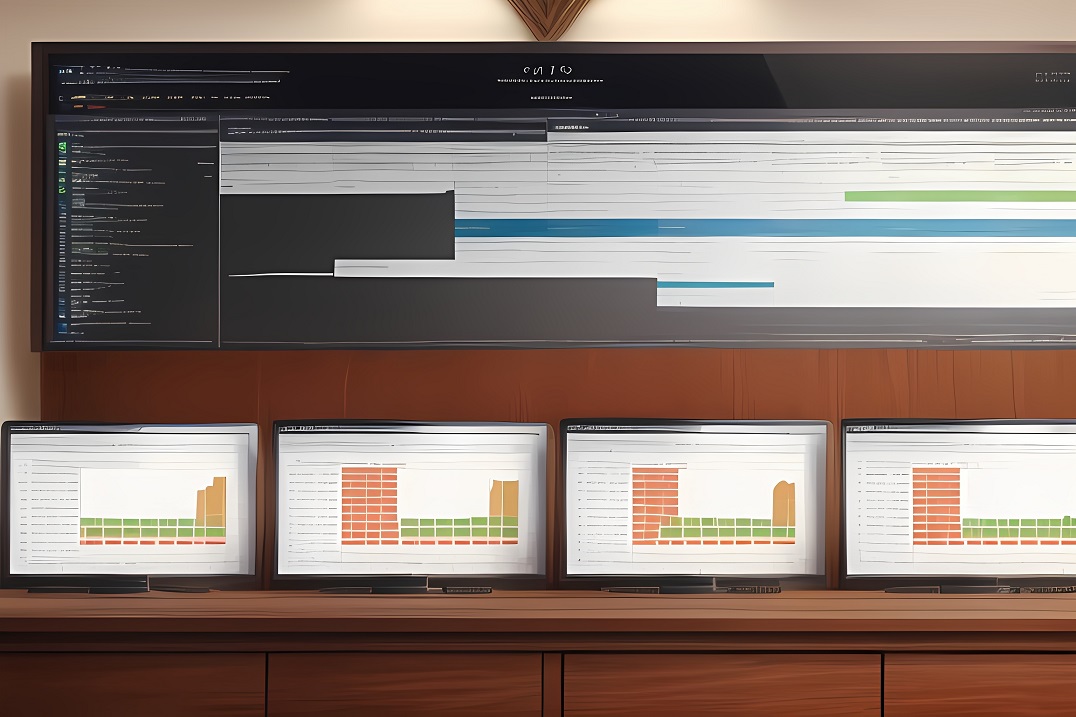What is the role of textile manufacturing software for enterprises?

When it comes to textile manufacturing software, everyone is both familiar and unfamiliar; both love and hate. The understanding of textile manufacturing software is also a matter of opinion, with various misunderstandings and misinterpretations. Textile manufacturing software cloud platform provides enterprises with a scalable manufacturing platform based on lean production and agile manufacturing. In terms of functions, it provides product configuration management suitable for customer orders, and provides suppliers with product production and supply information. Provide relevant demand forecast capacity and supplier related customer information, etc. Signing an IT general contract or tripartite contract can help solve difficult problems such as out-of-shape business and IT planning, lack of detailed IT design, difficulty in finding reliable technology suppliers, difficulty in coordinating multiple suppliers, and difficulty in maintaining and upgrading service guarantees. Textile manufacturing software itself is an extremely complicated and professional project. Today's sharing is to help you have an in-depth and transparent understanding of the common difficulties in the implementation of textile manufacturing software, and also provide some personal solutions and suggestions.
The purpose of textile manufacturing software mainly includes the following aspects: (1). Solve the contradiction between the changing market and balanced production; (2). Make the supply commitment to customers better; (3). Solve the inventory management problem of both material shortage and inventory backlog; (4). Improve quality and reduce costs; (5). Change the departmental standard view in the enterprise.
LongRiverTech textile manufacturing software provides a full set of project consulting, product customization development, project deployment and implementation, and online cloud platform customization and operation of technical services to meet the industry needs of material, dye, color, size.
In LongRiverTech textile manufacturing software, the multi-level WBS structure of projects and tasks coexists with complex network graphs to meet the project management needs of textile users and the special industry needs of material, dye, color, size.
Through the business intelligence analysis system, we can keep abreast of the various capabilities of personnel and the completion of KPI indicators, and quickly evaluate and adjust personnel efficiency. Prevent financial risks, keep abreast of the company's financial situation, and make targeted adjustments to understand the company's profits and costs in real time. Keep abreast of whether the existing product structure is reasonable, the situation of unsold goods, whether the inventory turnover is within the expected range, and the implementation of KPI indicators. Real-time control of member dynamics, formulate and track member service plans, understand old customer contribution rate, return rate, etc., and carry out special follow-up for high-quality members. . Understand the existing store operating conditions, the completion of KPI indicators, and make timely and targeted adjustments. Support multiple platforms, computers, tablets, and mobile phones, and check the operation status anytime, anywhere, truly liberating managers from the office. Textile manufacturing software smart warehousing + enterprise WeChat, the best mobile version of invoicing, multi-terminal synchronization, multi-person collaboration, and easy management of smart warehousing. The resource management functions required for sales include: quotation, signing, delivery, and payment collection. The resource management functions required for procurement include: demand, documentary, receipt, and payment. The resource management functions required by the warehouse include: how much to receive, how much to send, and how much to store. The resource management functions required by production include: what is demanded, what is produced, and what is purchased. The resource management functions required by the project include: price control, bill of materials, and approval process. Industry 4.0 intelligent cloud platform usually integrates a variety of intelligent management software systems to extend enterprise management applications in multiple fields, such as: PLM product life cycle management software, factory intelligent logistics system, intelligent dispatch software, intelligent workshop execution software, factory operation control software , BPM enterprise process management software, BI business intelligence management software, HR human resource management software, enterprise mobile application APP, operation monitoring cloud platform, etc. Cross-border e-commerce resource management management software helps cross-border sellers manage a complete set of process solutions such as product development, procurement, quality inspection, warehousing, order management, customer service, financial management, report analysis, etc., to help accurately manage cross-border e-commerce business . The BOM bill of materials, that is, a file that describes the product structure in a data format, is a product structure data file that can be recognized by a computer, and is also a leading file for resource management. BOM enables the system to identify the product structure, and is also the link to connect and communicate with various businesses of the enterprise. The types of BOM in the resource management system mainly include 5 categories: indented BOM, summarized BOM, reverse check BOM, cost BOM, and planned BOM. The complete product design change resource management system not only provides common functions such as day-selection, single-batch, whole-batch, and immediate changes, but also provides the function of running out of changes: the system is based on the user's settings , can automatically use old materials first, and switch to new materials automatically after the old materials are used up; and provide corresponding reports to show the estimated future inventory status after material changes, which is convenient for management.

Textile manufacturing software leasing and pledge functions include: lending note, borrowing note, return note, pledge loan entry note, pledge loan issue note, loan fund settlement note, pledge return note, and pledge physical delivery settlement note. The menu authority of LongRiverTech textile manufacturing software adopts an adaptive menu layout, and supports three menu layouts: the computer version tree, the tablet version tiled, and the mobile version bottom. The left menu of the desktop version, the upper navigation menu of the tablet version and the lower navigation menu of the mobile version adopt an adaptive menu layout. LongRiverTech textile manufacturing software menu authority includes: role menu authority configuration, role access authority to business process, user group menu authority configuration. Through the data configuration of LongRiverTech textile manufacturing software, the subject limit configuration and subject account relationship setting can be performed.
Construction basic engineering system includes: construction project equipment automation management system, engineering project automation management software system, intelligent construction site automation office system, engineering project automation control management information system, Party A project contract management software, Party A engineering project management software, Geotechnical engineering analysis software, construction schedule management planning software. Group store sales final accounts: It is used to monitor the sales plan of stores in each region of the group, including annual plan, monthly plan, weekly plan, and the completion of the plan. Textile manufacturing software cloud platform production material management MRPII can flexibly apply material management methods and cost accounting in line with the industry. While using textile manufacturing software, enterprises generally also integrate with other systems, such as: legacy resource management system, cloud product management system, budget and final account management system, electronic shopping guide system, BI business intelligence, e-commerce management system, On-site order meeting system, intelligent store management software, OA enterprise mobile office software, micro member management system, store display system, super store manager software, mobile storage system, etc. Through the textile manufacturing software cloud platform and smart e-commerce ecosystem, it reaches consumers efficiently. Use paperless, intelligent, scientific and efficient warehouse management to manage the flow of people, logistics, cash, and information. Analyze the pulse of the market through business intelligence data and gain insight into industry trends. Reduce costs, improve efficiency, and create a better user experience through omni-channel integration. Efficiency improvement: For follow-up logistics, delivery, quality inspection, etc., you can directly see the work allocation of each department from the system. For example, if a customer needs the same clothing as last year, the staff can directly query from the system to find out the latest measurement record for the customer to confirm, avoiding the cost and time of repeated measurement, improving efficiency and saving costs. If it is still a paper-based record, it is difficult to reuse historical data records. Now, invoicing in logistics management, on-time production completion in production order management, process control in procurement management, and finished product warehousing management in barcode management can all play a role. Resource management system sales management: sales plan, sales file, sales opportunity, sales quotation, sales contract, sales order, sales delivery, sales payment, sales return, commissioned sales. Textile manufacturing software inventory management usually includes: quality inspection form, storage, storage, inventory query, cargo statistics, inventory analysis and other reports.
Textile manufacturing software project management functions include: project, task, label, article, idea, document, user, manpower, customer, rate, log, progress, plan, quality, risk, status, scheduling, WBS, priority, Pricing, associations, sales, collections, hours, billed costs, allocations, values, invoicing, and production imputation. Textile manufacturing software Warehouse management functions include: warehouse goods, commodity inventory details, transfer order, inventory list, other storage and output, consumption and delivery documents, loss report, cost adjustment form, general application form (in plan), special application form Receipt (unplanned), receipt of goods into warehouse receipt, return of goods out of warehouse receipt. LongRiverTech textile manufacturing software purchase receipt includes: create purchase receipt, check the flow of purchase receipt, reverse purchase purchase receipt, view purchase receipt, print purchase receipt, export purchase purchase receipt , To-be-received invoice query, received invoice query, split receipt. The easy-to-use textile manufacturing software supports users to conduct comprehensive query, transaction flow query, capital flow query, inventory flow query and processing flow query through business flow. Small and medium-sized textile enterprises focus on production and processing to drive upstream procurement and downstream order management. The conventional textile manufacturing software satisfies the large-scale production management of batch products. Mass-produced products with a high degree of standardization can quickly reach saturation through large-scale expansion, leaving a lot of room for growth in non-standard orders that require individual customization. For more innovative non-standard orders, it is increasingly dependent on the auxiliary management of computer systems to cope with the explosive growth of business data.

Traditional bookkeeping is realized through manual records, which not only affects the accuracy and recording speed, but also is inconvenient when looking for a certain data. Textile manufacturing software combines accounting and information technology to conduct unified management and automatic integration of accounting-related data of enterprises, reducing the links of manual organization and realizing effective management of the entire enterprise supply chain. By integrating textile manufacturing software with other multiple information management software systems, complete information system solutions for different industries can be formed, such as: Internet + e-commerce solutions, brand distribution solutions, supply chain solutions, business intelligence solutions , mobile office solutions, cloud platform solutions, three-dimensional warehousing solutions, cross-border e-commerce solutions, smart factory solutions, industry 4.0 solutions, clothing resource management systems, multi-brand operation systems, wholesale and retail integrated solutions program etc. The personalized workbench provides a personal cockpit, home page pending items, pending business documents, report interface, powerful calendar functions, etc. Textile manufacturing software cloud platform integrates and shares the upstream and downstream of the enterprise supply chain through the mobile Internet of Things. Purchasing is an important part of enterprise cost control. The procurement management of textile manufacturing software can determine reasonable order quantities and excellent suppliers, and maintain the best security reserve for the enterprise. It can provide ordering and acceptance information at any time, track and urge outsourcing or entrusted processing to ensure the timely arrival of goods. You can also create supplier files and use the latest cost information to adjust inventory costs.
In general, through the textile manufacturing software to strengthen the refined management capabilities, especially the details of customer follow-up, details in the production process, and details in quality control. Out of control of these details will definitely lead to customer loss and product quality. Out of control, the consequences of out of control of production costs, without textile manufacturing software management means, the problem will inevitably recur, but with textile manufacturing software, the problem will be solved easily.